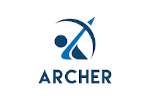Scholarship Essays
Build highly sought after skills and help fund your degree.


For additional financial aid opportunities, check out MindSumo Scholarship Challenges Learn More »
Marshall Scholarship Essay Example 2 - Personal Statement
Personal Statement
In the sixth grade, I took a test to see if I was left- or right-brained. To my elementary eyes, the result of that quiz would be the truth from on high—a resolute word that would define the man to come as either analytic or artistic. Unfortunately, the oracle I sought gave me a perplexing answer. Much to my disbelief, my tallied score yielded a perfect split down the middle. Was I mentally ambidextrous or mentally challenged? I preferred to think the former; either way, I have never felt at home thinking in just one hemisphere.
When I tell people that I study biological anthropology and philosophy, they oftencuriously raise an eyebrow. “What an odd combination,” they remark. Even though I have come to expect this, I understand their bewilderment. Though the sciences and the humanities were once braided into one holistic education, today, the two behave like estranged lovers settling a bitter divorce, resulting in separate academic quarters. One hundred years ago, every student at Mythic University—humanist, scientist, and farmeralike—was required to read Plato in the original Ancient Greek. Receiving a broad education was seen as part of becoming a true scholar. Despite their differences, when I look at the current interaction between the humanities and the exact sciences—specifically between philosophy and evolutionary biology—I see cause for hope, perchance even reconciliation, through philosophy of science. In this pursuit, I have tailored my undergraduate education to lay a foundation in both philosophy and science.
Biological anthropologist by day. Many of my days are spent at the Mythic Universitypaleoanthropology lab, where I am fortunate to work as Dr. John Teacher’sundergraduate research assistant, casting the semicircular canals of small mammals tostudy their morphology as it relates to movement. The semicircular canals house the organs of balance, and their morphology is inherently tied to locomotion. Through the analysis of these casts, we can analyze variation within readily available populations.High-resolution computed tomography (CT) scans allow for the non-invasivere construction of this tiny region of the inner ear in the minutest detail. This exciting approach is providing new insights into the locomotion of hominids and other ancient, extinct primates without damaging rare fossils. Studying the variation in canalmorphology helps us assess the reliability of this technique.
The experience of this assistantship, along with two summers of standing in a waist-deepCosta Rican swamp, culminated in my honor’s thesis, which investigates the agility of three species of New World monkeys through both observations of positional behavior and analysis of semicircular canal morphology. Agility is a rather nebulous concept. It is my hope that this comparative examination will yield an effective means of quantifying relative levels of agility among primates.
Understanding how primates move requires a functional understanding of mammaliananatomy—a passion of mine for the past three years. The opportunity to assistant-teach three undergraduate anatomy courses has been among the most fulfilling parts of my education. When I taught gross anatomy I had the opportunity to work with two cadavers.
A person can learn a great deal about human anatomy from texts, but there is an eye opening degree of realism that sinks in during cadaver study. Furthering my own knowledge of anatomy would be reward enough for teaching these classes. What really propels me to teach, though, is the possibility of helping my students germinate a genuine curiosity in a subject that I love.
Philosopher by night. While fascinated by my anthropological pursuits, I take tremendous pleasure from reading philosophy into the early morning hours, sitting in the back of the dimly lit Mythic University Diner, famously open 24 hours a day.Camaraderie is high at the Diner as a good number of philosophy graduate students study there every night, conversing over coffee. It was there where much of my interest in philosophy blossomed as I listened to many late-night debates about the virtues and failings of Aristotle and the nature of mind. For a while, I was seen as the token scientist, but after studying there for two years and taking a two graduate-level philosophy courses in ethics and the philosophy of mind, philosophy students are beginning to recognize me among their ranks. My experiences have led me to form a biweekly study group where undergraduate philosophy majors can interact and discuss their readings with the graduate students.
I became particularly interested in the interaction of philosophy and biology when I readNietzsche’s On the Genealogy of Morals for the first time. Seeing a unity of ideas between some of what Nietzsche wrote in Genealogy and aspects of contemporary evolutionary biology made me realize that a more fruitful exchange of ideas between biologists and philosophers could precipitate advances in both fields. When I readGenealogy again last year in my ethics seminar, I wrote a paper about a consilience between Nietzsche and the theoretical work of Amotz Zahavi—the ornithologist and author of The Handicap Principle—which I will submit for publication this fall.
This idea came as an epiphany—one shining moment of clarity that allowed me to unite seemingly disparate fields of knowledge for the first time. As I continue to investigate the relationship between philosophy and biology, I sense that more epiphanies are on the horizon. For me, continuing to bring the two fields together will not only require both sides of my mind, but also a mentor with the experience and breadth of knowledge to guide me in such an endeavor. Studying with Dr. Jonathan Hodge at the University ofLeeds’ History and Philosophy of Science program will put my mental ambidexterity to good use.
Original Source: Penn State University
Disclaimer: These essays are provided to assist writing, not to be copied
